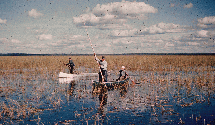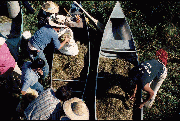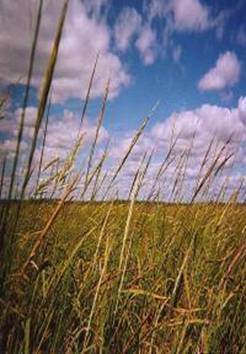Historical Importance
 |
The harvesting of wild rice goes back hundreds of years. Its main importance is noted as a food source to Native American tribes from the tribes around the Great Lakes region to the Seminole in Florida. To the most famous users, the Ojibwe people, wild rice was a staple grain to their diet as well as a valuable trading resource. It did, however, have a negative stigma attached to it and many immigrants never harvested the grain themselves (Thayer 2006). |
| The Ojibwe name for wild rice is manoomin which translates to 'good grain'. It continues to be traditionally harvested with birch bark canoes and two long sticks. Two people per canoe go out during late September and use the sticks to knock the grains into the canoe. After bringing the still-wet rice to the local mills, it is first toasted in large batches over fire. Upon cooling, the rice is then removed from the hulls and sorted by size to be sold. Before such mills, the Native American people did all this by hand (U.S. Fish & Wildlife Service 2010). |
Image from http://www.fws.gov |
On the White Earth Indian Reservation in northern Minnesota where unemployment rates are high, the traditional harvesting of wild rice is still a necessity. Every autum they harvest about 50,000 pounds of rice to then sell to local mills. The White Earth Land Recovery Project supports this harvest have helped them to earn greater shares of the profits (Wilcox 2007). Originally appeared in SMITHSONIAN (September/ 2007). |
Image from http://www.fws.gov |
Image from http://www.fws.gov |
There are some challenges that modern day Ojibwe people face though in maintaining this tradition. Many acres of marsh land have been drained and converted into agriculture land or for housing. Tribes around northern Minnesota have been fighting to regain their hold and keep wild rice around for many centuries to come (Thayer 2006). |
Are you getting hungry while reading all about this delicious grain? Try some new recipes!
To go back to the home page simply click the 'home' tab at the top of this page or click here


